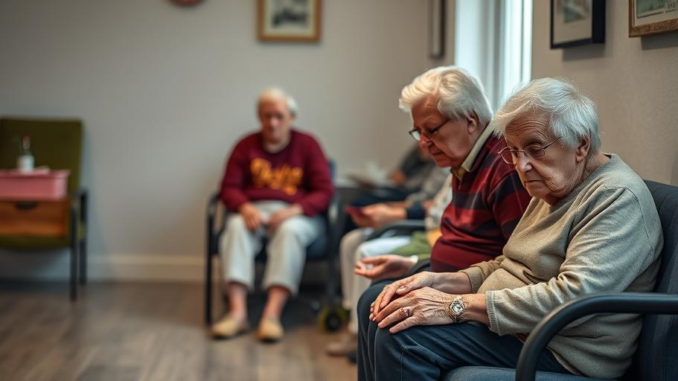
Summary
This article explores the groundbreaking research presented in the Canadian Geriatrics Journal (CGJ), Vol. 27, No. 4 (December 2024). It highlights key findings on patient priorities in managing urinary incontinence and the career paths of geriatric medicine trainees. The issue also presents important clinical guidelines on social isolation and loneliness in older adults.
Gain peace of mind with TrueNASs 24/7 support from healthcare data storage specialists.
** Main Story**
Alright, let’s talk about the latest Canadian Geriatrics Journal (CGJ). The December 2024 issue – Vol. 27, No. 4 – it’s packed with some really interesting stuff that I think you’ll find relevant, especially if you’re working with older adults. The CGJ consistently puts out some amazing research.
Putting Patients First: A Focus on Urinary Incontinence
First up, there’s this study by Kirillovich, Rajabali, and Wagg, all about urinary incontinence. But here’s the kicker: it’s not just about the medical side of things. It’s called “Exploring the Priorities of Older Adults in Managing Urinary Incontinence: a Patient-Oriented Research Approach”. Rather, it’s patient-centered. What actually matters to older adults when they’re dealing with this? You know, what are their priorities?
Think about it; if we understand what’s truly important to them, we can tailor our interventions and support systems to actually make a difference in their lives. This isn’t just about treating a symptom, it’s about empowering patients to be active participants in their own care, even manage it themselves! And let’s be honest, better patient satisfaction usually translates to better health outcomes. It makes sense.
I remember once working with a patient who was really struggling with this, and she was more concerned about being able to go out and socialize with her friends than about perfectly managing her condition. Once we shifted the focus to helping her feel confident and comfortable in social situations, everything else just fell into place. So, yeah, this study’s findings, I think they could be really valuable for any of us, actually, when we’re dealing with patients experiencing this.
Where Do Geriatric Specialists Go?
Then there’s this other study, a big one with a bunch of authors – Mah, Kanagalingam, Best, Elhayek, the list goes on – looking at the career paths of geriatric medicine trainees. “Determinants of First Practice Location among Canadian Geriatric Medicine Trainees and Recent Graduates: Findings of a Cross-sectional Survey in 2023,” that’s the one. Now, why should we care? Well, workforce planning, for one. If we want to make sure that older adults everywhere have access to specialized care, we need to understand what influences where these specialists choose to practice.
It turns out, there are a lot of factors at play. Everything from personal preferences to professional opportunities, and this study really digs into the relative importance of each. For instance, maybe someone wants to be close to family, or maybe they’re drawn to a specific type of practice environment. Whatever the reason, understanding those reasons, it’s key to attracting and retaining these specialists in areas that really need them. Healthcare policymakers really need to pay attention, if you ask me.
And I think about it from a personal perspective, you know? Like, when I was starting out, the appeal of a big city was huge. But then, after a while, the slower pace of life in a smaller town started to look pretty good too. So, it’s not just about the job, it’s about the whole package.
Tackling Isolation and Loneliness
Oh, and I almost forgot, the issue also features the “Canadian Clinical Guidelines on Social Isolation and Loneliness in Older Adults,” developed by Conn, Billard, Dupuis-Blanchard, and K. And that’s a big deal, too. Because social isolation and loneliness can have a devastating impact on the health and well-being of older adults. We all know that, right? It’s not just about feeling sad; it can actually increase the risk of all sorts of health problems, both physical and mental.
These guidelines offer practical, evidence-based recommendations for healthcare providers to assess and address these issues. It’s about identifying those who are at risk, preventing isolation from happening in the first place, and intervening when it does. They even provide tools and resources that we can use in our daily practice. Because, the truth is, taking care of older adults, it’s got to be holistic. It’s not just about treating their physical ailments, it’s about addressing their social and emotional needs, too. A patient is far more than just a list of symptoms and ailments.
All in all, this issue of the CGJ, it really highlights the ongoing efforts to improve the lives of older adults. It’s a dynamic field, and the research presented here really emphasizes the importance of patient-centered care, workforce development, and addressing those crucial social determinants of health. And because it’s open access, everyone can access it. Because honestly, as our population ages, the insights provided by this journal, well, they’re going to be more important than ever. It shows how much geriatric care has changed. And hopefully will continue to!


If better patient satisfaction translates to better health outcomes, does that mean happy hour with my doctor counts as preventative medicine now? Asking for a friend… with a prescription pad.